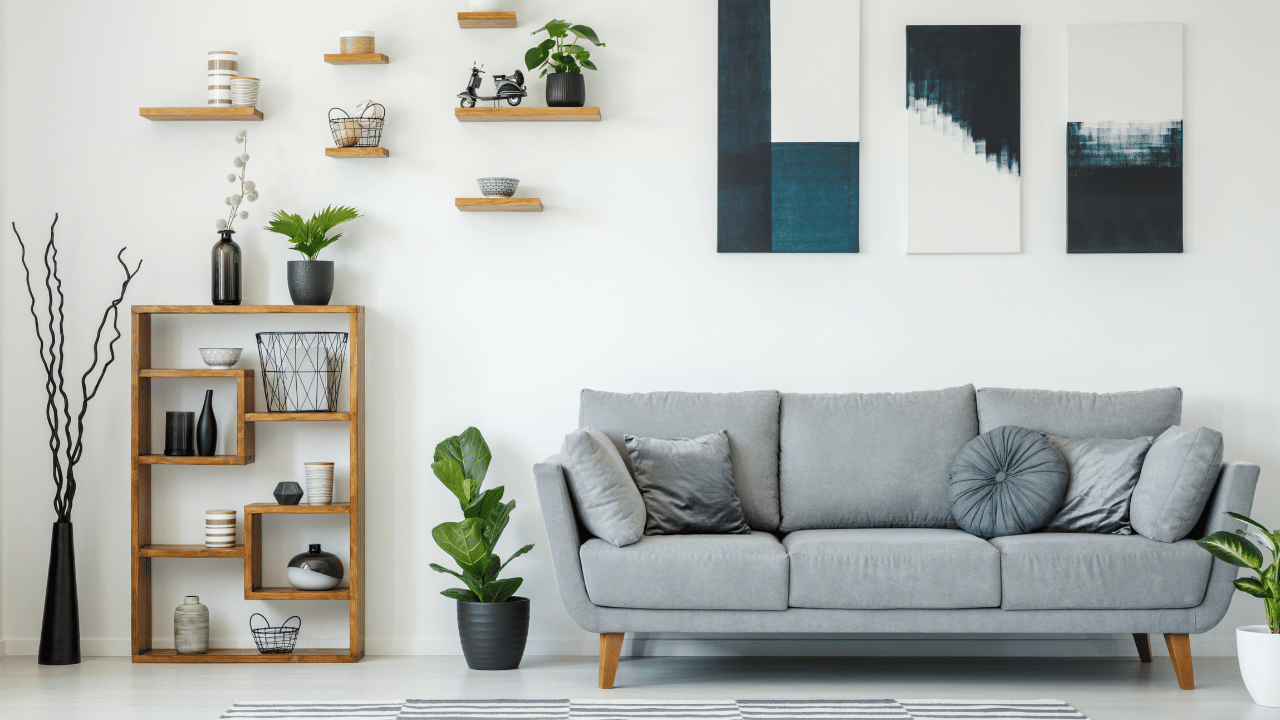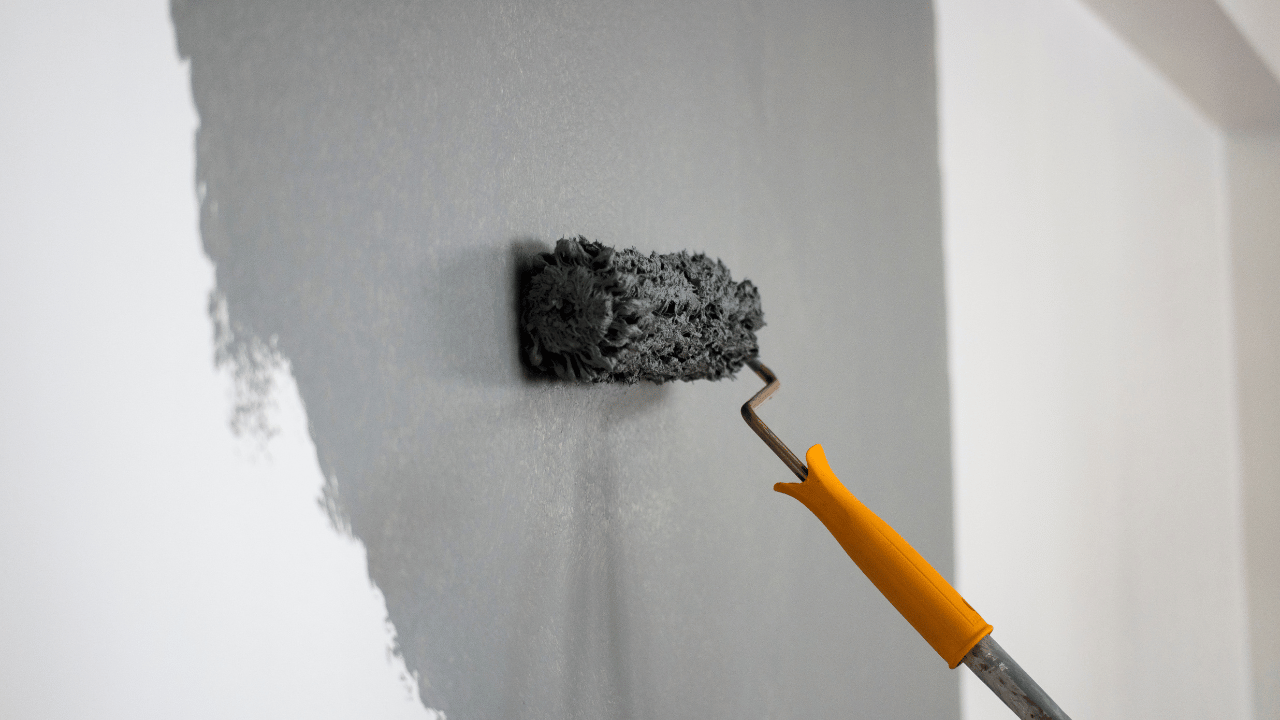Last Updated on September 7, 2023 by Pro Handyman Australia – Editorial Team
Deciphering Paint Formulas and Finishes
Choosing the right paint isn’t just about selecting the perfect color. Beyond the vast spectrum of shades lies the challenge of navigating types, finishes, and formulations. But what do terms like “low-VOC” or “eggshell” mean? This section demystifies these options.
The Transformative Power of Paint
Never underestimate the impact of a fresh coat of paint. It can rejuvenate a room, breathe life into an old piece of furniture, or set the tone for your entire living space. As you embark on your painting journey, understanding the subtle differences between paint finishes such as satin and semi-gloss will be your guiding light.
Interior Paints Unveiled
Primarily designed for walls within homes, interior paints serve as silent backdrops that often go unnoticed when done right. Yet, the myriad of options available can be overwhelming. From deciding between matte and eggshell to understanding the significance of acrylic versus oil-based paints, there’s a lot to consider. And while the choice of primer can often be puzzling, knowing when and where to use it can greatly enhance your painting results.
Key Considerations for Modern Homes
The golden rule when selecting paint is ensuring it resonates with your personal aesthetic. After all, you’re the one living with it day in and day out. However, if you’re seeking some direction, rest assured that there are paints tailored to cater to the diverse needs of modern homes. Let go of the paint-related anxiety; with the right information at hand, you’ll be well-equipped to make the best choice for your space.
Distinguishing Between Interior and Exterior Paint
Understanding the difference between interior and exterior paint is crucial before you start any painting project. Utilizing that leftover exterior paint for an indoor space, like your child’s room, may not be the wisest choice. Exterior paint formulations incorporate chemicals designed to resist mildew, prevent chipping, fend off peeling, reduce fading, and withstand various weather conditions. Such properties, while beneficial outdoors, may not be suitable or safe for indoor environments.
Unraveling Paint Bases: Acrylic, Latex, and Oil

When discussing paint types, there’s often some confusion surrounding the terminology. For instance, while many equate “oil-based” paints with alkyd paints, they’re not technically the same. Alkyd paints consist of alkyd resins diluted in a specific thinner. These paints might take a bit longer to dry, but they often yield a more consistent, well-blended finish.
That said, while alkyds hold an esteemed reputation for exterior projects due to their robust performance, they aren’t ideal for interior spaces. The lingering fumes they emit can contain volatile organic compounds (VOCs), which pose health risks, including some known carcinogens. If you’re pondering the use of alkyd paints indoors, it’s recommended to seek advice or services from professional painters. Historically, oil-based paints were preferred for external applications or in older buildings where specific adhesion was necessary.
Delving Deeper: Water-Based Paint Varieties
When it comes to water-based paints suitable for interiors, two primary variants emerge: acrylic and latex. Acrylic paints possess additives enhancing their elasticity, adherence, and resistance to mildew and water. This makes them an excellent fit for moisture-rich areas like bathrooms. Furthermore, they dry faster than their oil-based counterparts and are relatively easy to clean, typically with just water and mild soap. However, while they might have fewer VOCs than alkyd paints, they still contain more than latex paints. Thus, if you opt for acrylic, ensure you take safety precautions, such as ensuring proper ventilation and considering the use of R95-rated respirators.
Interestingly, some brands have recently launched waterborne alkyd paints, touting them as a fusion of alkyd and acrylic paints’ best features, all with minimal VOCs.
On the other hand, latex paints have gained substantial popularity for interior projects. They dry quickly, are cost-effective, and produce fewer VOCs during the drying process. While they cover vast spaces efficiently and offer a diverse color palette, one must exercise caution to ensure even application and prevent the previous paint layer from being visible.
Selecting Paints with Minimal VOCs
For those prioritizing health and environment, paints labeled as low-, no-, or zero-VOC are recommended. Specifically, low-VOC paints contain less than 50 grams of VOCs per liter. Meanwhile, zero-VOC paints, contrary to their name, contain up to five grams of VOCs per liter. Even though modern paints generally have fewer VOCs than older versions, it’s essential to practice safety, ensuring appropriate protection and ventilation until the paint has entirely set.
Understanding Paint Finishes: Making the Right Choice
The Science of Gloss and Sheen
Paint finishes have a significant role in the aesthetics and durability of painted surfaces. While ‘gloss’ and ‘sheen’ are terms frequently used interchangeably, they have distinct meanings. Gloss refers to how much light is reflected at a 60-degree angle, giving a sharp and pronounced look. In contrast, sheen reflects light at an 85-degree angle, producing a more subtle reflection.
However, a word of caution: there isn’t a universal standard in naming these paint finishes. For instance, one brand’s eggshell might be shinier than another’s or might even parallel another’s semi-gloss. Some brands even vary naming conventions within their product lines. But for clarity, paint finishes typically progress from matte (or flat) to eggshell, satin, semi-gloss, and finally, glossy or high-gloss. For the sake of consistency, we’ll align our terms closest to the glossiness scale familiar to many, similar to Benjamin Moore’s system.
Remember, the desired color and finish can be customized. If you fancy a specific shade in an eggshell finish, for example, the store can mix the desired color with the appropriate base.
Choosing the Ideal Paint Finish for Your Space
Eggshell finishes have found favor among many homeowners, striking a balance between the smooth maintenance of glossier options and the imperfection-concealing abilities of matte paints. Some manufacturers have even introduced matte paints that boast the same ease of cleaning as eggshell variants.
However, it’s worth noting that while eggshell paints are versatile, touch-ups can be more challenging. Sometimes, repainting only a section can result in noticeable splotches, especially under certain lighting conditions.
For architectural details like window and door trims or frequently-used areas like kitchen cabinets, the traditional choice is a semi-gloss finish. Its ease of cleaning makes it perfect for surfaces that accumulate fingerprints and smudges.
When considering high-traffic spaces, rooms that are prone to messes (think kitchens or rooms with young children), or humidity-rich environments, it might be wise to lean towards glossier finishes. Yet, one must be cautious: the shinier the paint, the more it accentuates wall imperfections. Therefore, a glossy finish demands a pristine surface, as even minor flaws or inconsistencies become more visible.
Selecting the Right Paint Finish for Interior Walls
Popularity and Practicality of Eggshell
Eggshell paint is widely favored as the go-to choice for interior walls, particularly in common areas such as living and dining rooms. Its appeal lies in its ability to strike a balance: it offers the easy maintenance of glossier paints while also effectively concealing wall imperfections, much like matte paints. It’s noteworthy that some manufacturers now produce matte or flat paints claiming to have the easy-cleaning properties of eggshell finishes.
However, eggshell does present a challenge: touch-ups can be somewhat tricky. If one decides to only touch up a section of the wall rather than repainting it entirely, there’s a chance that the spot might be noticeable under certain lighting conditions.
When it comes to features like window and door trims, or frequently used areas like kitchen cabinets, semi-gloss finishes are the conventional choice. This finish not only brings out the aesthetics but is also easy to maintain, especially for surfaces that are more prone to attracting fingerprints.
For rooms that experience high footfall or are prone to becoming messy, or places where humidity is a concern, it’s advisable to opt for glossier finishes. However, a word of caution: the shinier the paint, the more it tends to highlight wall imperfections. Hence, for the best results with a high gloss paint, the surface should be in impeccable condition.
Delving into Color Choices

Seeking the Perfect Shade
When it comes to choosing the best paint color for interiors, a timeless preference is the use of neutral shades for walls, complemented by lighter trims, often in white. Ultimately, the decision on color rests with the homeowner and their family. While there are countless shades that might be underrated, it’s essential to find a hue that resonates with the home’s inhabitants.
Understanding the larger design concept for the entire home can be invaluable. This approach not only ensures continuity throughout the spaces but can also help in making informed decisions for individual rooms. For instance, one might consider drawing an accent color from one room to be the primary shade in another.
And while the paint’s name might sound straightforward, it’s essential to understand the nuances. When it comes to shades like white, there is a vast spectrum, and each variant can bring about a different ambiance in a room.
The Impact of Lighting on Paint Choices
Understanding Light Dynamics
Lighting plays a pivotal role in how a color manifests in a room. Natural light, for instance, introduces various undertones based on the window orientation. A room facing north may have cooler, gray undertones, suggesting a warmer color palette, whereas a south-facing room, with its inherent warmth, might benefit from cooler hues. Rooms facing the east or west experience changing light tones during the day, requiring careful consideration based on when the space is most frequently used. Furthermore, the environment outside the windows – whether it’s green foliage or an urban landscape – can cast specific shades into the room, influencing the overall appearance of the painted walls.
Choosing Paint Based on Room Characteristics

Understanding Room Size and Perception
Dark hues tend to make rooms appear smaller, while lighter tones often give an illusion of more space. For instance, paints with a glossy finish reflect natural light, creating a sense of spaciousness, whereas matte finishes absorb light, contributing to a more confined feel. However, there can be exceptions to these general principles. Small rooms, such as powder rooms, can benefit from bold, darker colors, lending them an intimate, cozy ambiance. Moreover, ceiling paint can be creatively employed to manipulate spatial perception. Utilizing either light pastels or even deeper shades can adjust the perception of ceiling height, making a room with an exceptionally high ceiling feel more proportionate and inviting.
Consider the Room’s Function
The primary use of the room greatly influences both the paint finish and color selection. For example, spaces that frequently encounter spills, handprints, or the playful messes of children, like kitchens, family rooms, and bathrooms, require more resilient paint finishes. On the color spectrum, the intended vibe of the room should guide your choice. Calming colors like blues, grays, and greens are ideal for relaxation zones. In contrast, energetic spaces might benefit from vibrant yellows, and passionate reds can evoke intensity.
Architectural Details and Finishes
When it comes to unique architectural features such as crown moldings, wainscoting, and cornices, it’s common practice to paint them in a contrasting hue or finish from the main walls. Often, these details are rendered in white or a complementary shade. A glossier finish like satin can be ideal for these elements, particularly for areas prone to scuffing. Such finishes can accentuate the depth and intricacy of features by reflecting light, but it’s essential to ensure the finish isn’t so shiny that it reveals imperfections. If highlighting architectural nuances is the goal, paint is an excellent medium. Contrary to traditional belief, features like wood detailing don’t always need to retain their natural shade but can be painted to emphasize their distinctiveness.
Coordinating Paint with Interior Decor
When determining paint shades, the room’s existing or planned decor plays a pivotal role. If the room is already furnished or you have certain elements in mind, the paint should complement these features. Instead of starting with paint, first finalizing furniture, fabrics, and other decor pieces can help streamline the color selection process, given the vast array of options available. If the decor includes items with multiple shades, such as patterned duvet covers, these can be used as a foundation to extract color ideas, ensuring a harmonious and coordinated aesthetic.
Sampling Before Purchasing
An essential step in paint selection is testing out samples in your space to see how they interact with varying lighting conditions and existing decor. Although most paint stores provide paint decks or chips, these often offer limited insight due to their small size. Instead, many retailers provide miniature paint cans, allowing you to create sample swatches on your walls. By painting a significant swatch, approximately 12-by-12 inches, and observing it at various times throughout the day, you can gauge how the color changes with fluctuating natural light. If hesitant about directly painting your walls, consider using services that provide large, removable paint samples from leading paint suppliers.
Preparing Walls and the Importance of Primers
A successful paint job begins long before you apply the first brush stroke. Ensuring the walls are clean and prepped for paint is crucial. Depending on the previous paint’s finish or if the wall has imperfections, light sanding might be necessary. In cases where you’re painting over a glossy finish, a significantly darker color, or problematic surfaces, a suitable primer is invaluable. Particularly when dealing with persistent issues like water stains, a reliable primer can be the key to preventing such marks from bleeding through.
Determining the Right Quantity of Paint
Generally, one gallon of paint covers approximately 400 square feet with a single coat. To avoid running out mid-project, always have some extra paint on hand. If there’s remaining paint after the job, store it in a well-sealed can, preferably with a layer of cling film under the lid to prevent it from drying out. Keeping additional paint is wise for future touch-ups, especially since paint colors may get discontinued or replicated shades might slightly differ.
Deciding on the Number of Coats
For an even and comprehensive coverage, applying a minimum of two paint coats is recommended. Depending on the previous wall color and the new paint’s opacity, more coats might be required. For darker hues, consider three layers to ensure the underlying color doesn’t peek through.
Maintaining Your Painted Walls
Paints designed for indoor use typically possess long-lasting durability. The main concern isn’t about the paint fading but rather the accumulation of minute particles that might lead to perceived dirt or discoloration. Most painted walls can be easily cleaned with a gentle soap solution and a soft cloth. Over time, the need for a fresh coat arises either due to noticeable damage or a shift in aesthetic preferences. Generally, consider repainting every decade or so. The frequency may vary based on room usage and evolving color preferences.
Conclusion
Choosing the perfect interior paint is about more than just picking a color; it’s an art that melds aesthetics with functionality. With the vast palette of colors, finishes, and brands available today, the possibilities are nearly endless. But armed with the right knowledge—from understanding the importance of sampling and preparation to gauging the number of coats needed—you’re set to make informed decisions that will breathe new life into your interiors. Remember, a well-chosen paint doesn’t just cover a wall; it enhances the mood, complements the furniture, and truly transforms a space. Happy painting!
